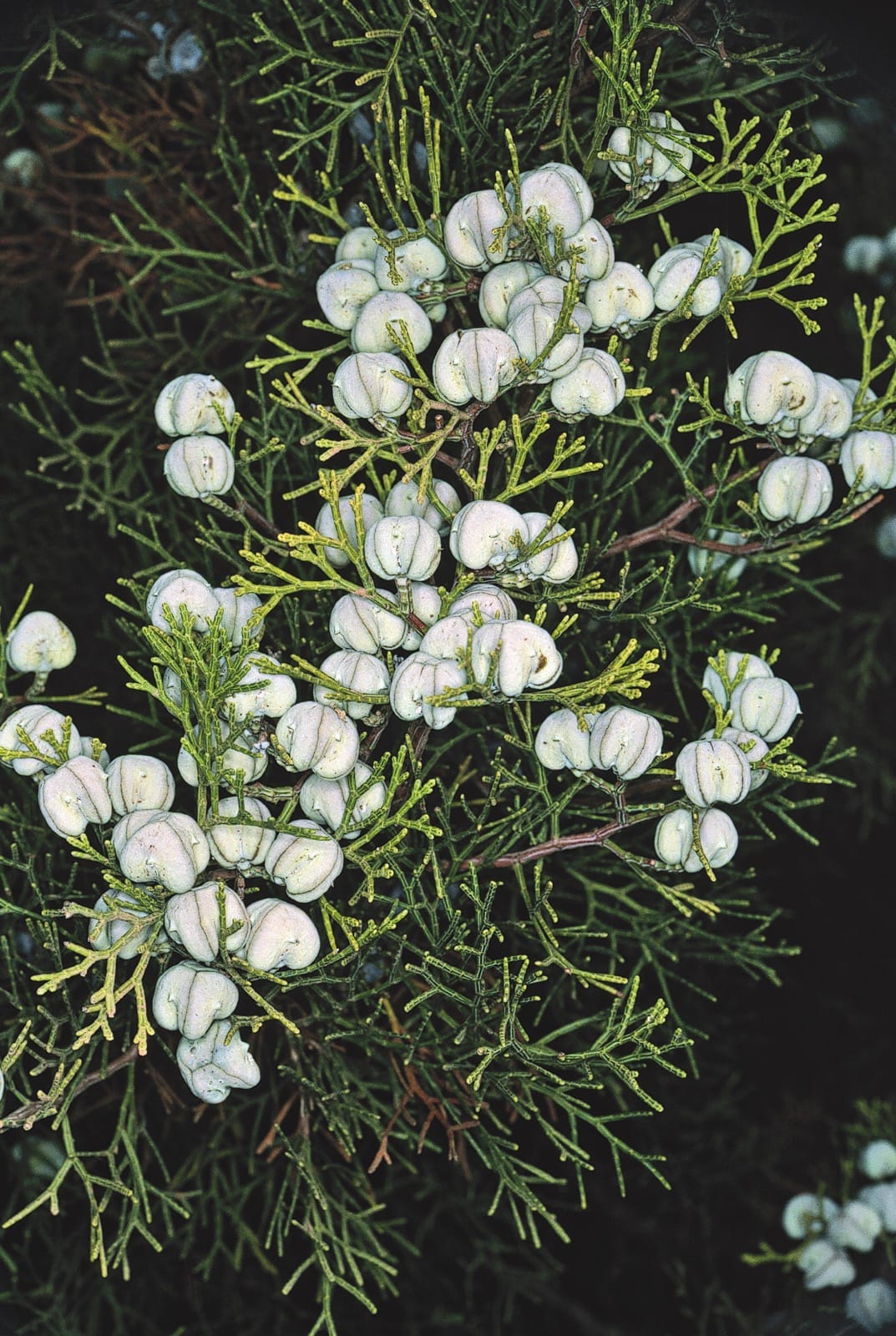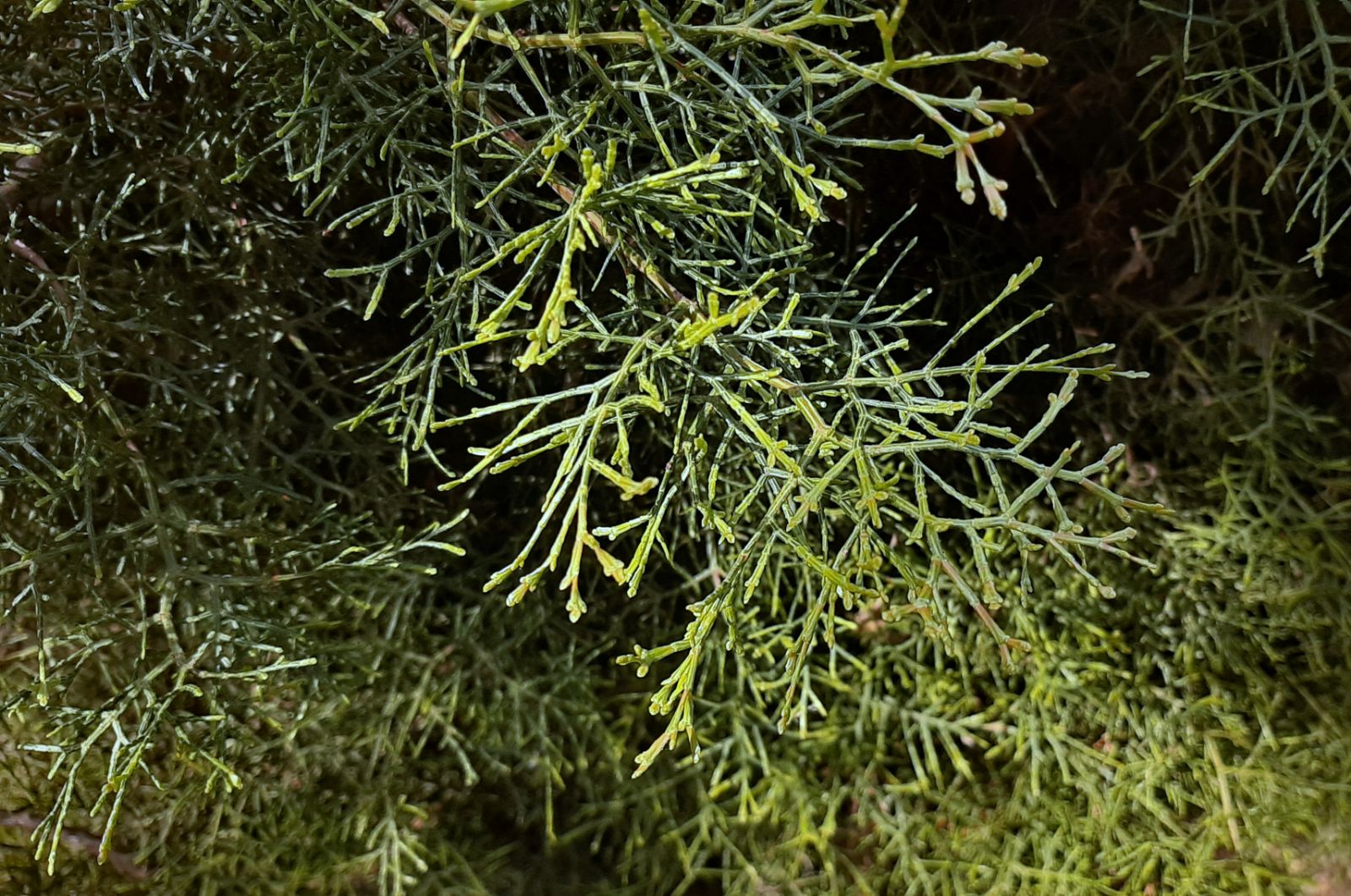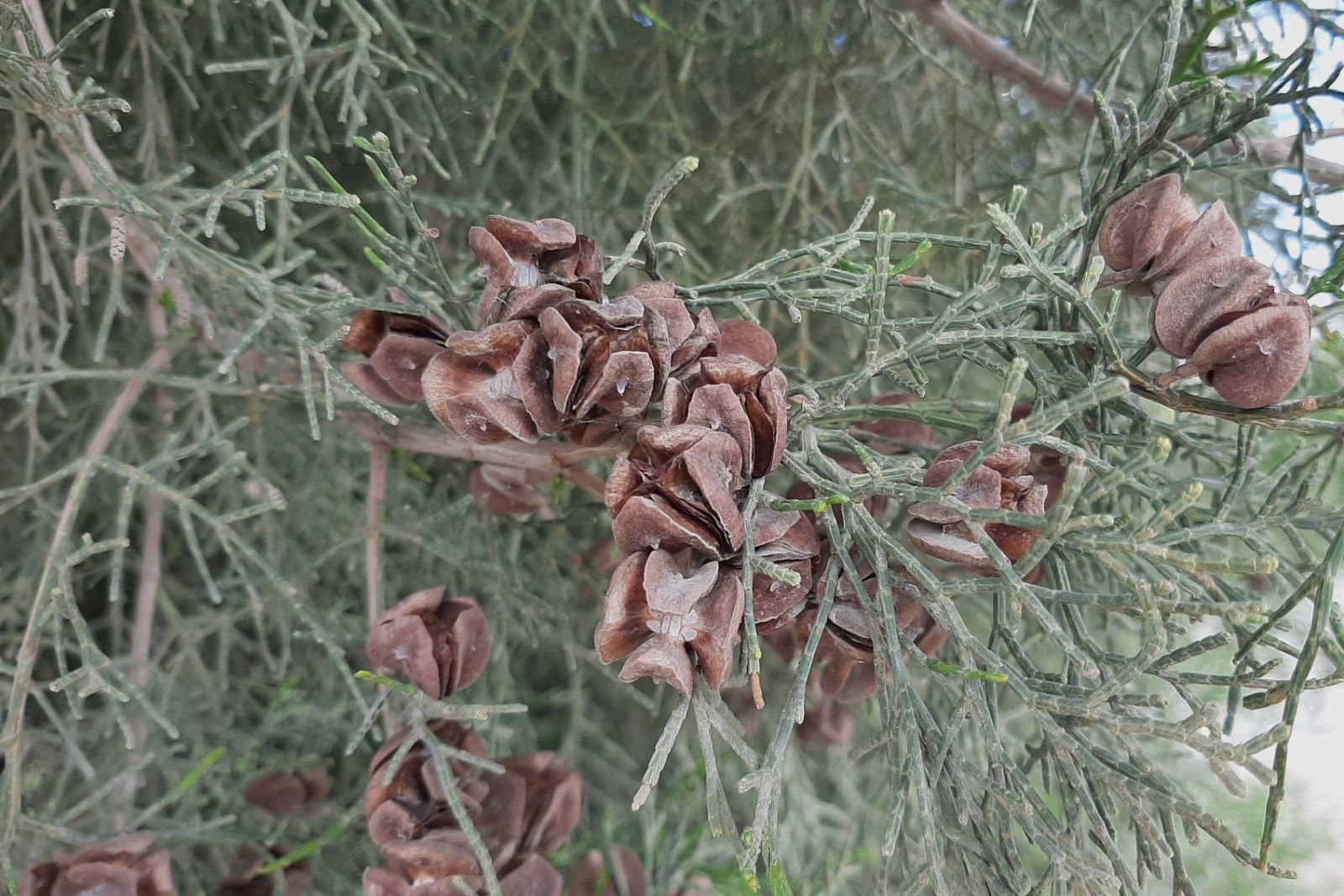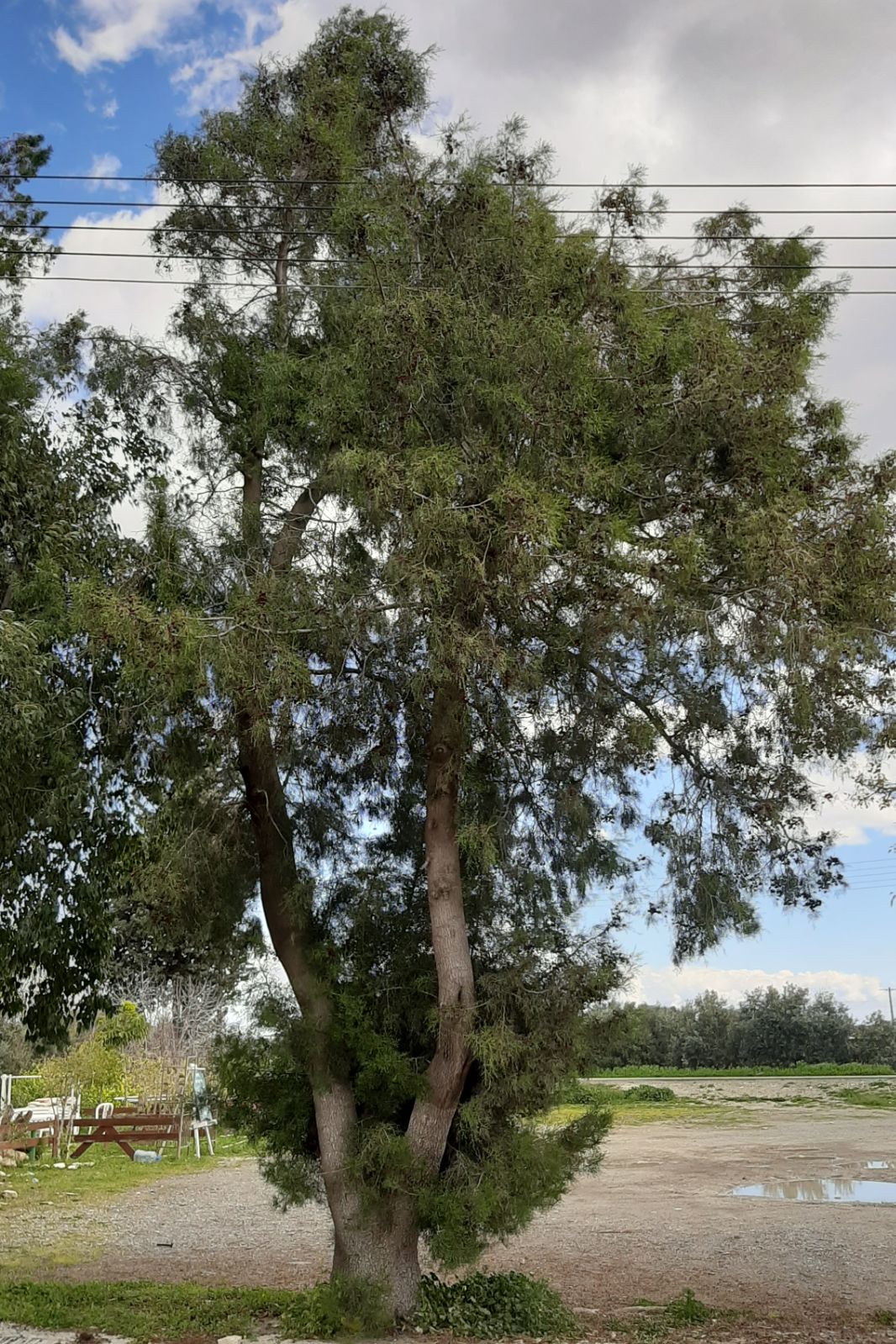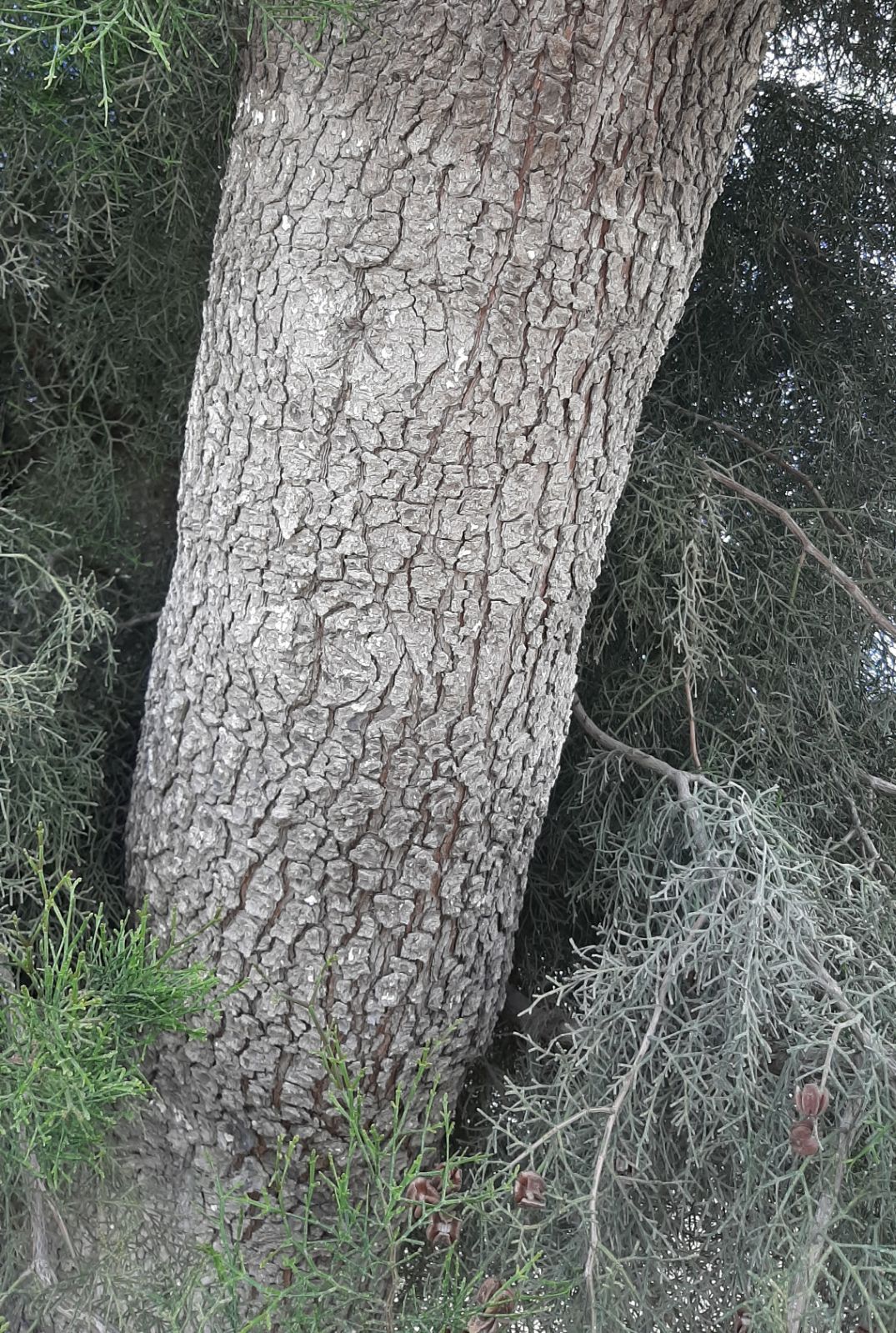Tetraclinis articulata
Credits
Article from New Trees by John Grimshaw & Ross Bayton
Recommended citation
'Tetraclinis articulata' from the website Trees and Shrubs Online (treesandshrubsonline.
Genus
Synonyms
- Callitris quadrivalvis Rich. & A. Rich.
- Thuja articulata Vahl
Other taxa in genus
Shrub or tree to 15 m, trunk straight or contorted, 0.6–1.2 m dbh. Bark thin, greyish. Crown conical or pyramidal. Branchlets flexible, articulated (each section 0.2–0.8 cm long) and dorsiventrally flattened. Leaves scale-like, decussate, appressed, the free section only 1 mm long, slightly dimorphic; the lateral pairs slightly longer than the facial pairs, which they partially overlap. Male strobili solitary, terminal, greenish yellow, 0.1–0.3 cm long with six to eight sporophylls, several adjacent shoots bearing solitary strobili, giving the appearance of a group. Seed cones solitary, terminal, subglobose, 0.8–1.2 cm long, initially glaucous blue, then greyish brown at maturity. Seed scales in two decussate pairs, heart-shaped to ovate, valvate, only the outer scales fertile, two to three seeds per scale; young cones with minute umbo. Seeds lenticular, 0.3–0.5 cm long; wings two, equal, to 0.8 cm long, reddish brown, translucent. The wood is golden-brown to orange-red with an intricate grain pattern, numerous knots and high resin content, highly valued by carpenters and cabinet makers. My desktop pen box is made of it (JMG). Masters 1893, Gardner & Jury 1993, López Lillo & Sánchez de Lorenzo Cáceres 2001. Distribution ALGERIA; MALTA; MOROCCO; SPAIN: Murcia, Sierra de Cartagena. Habitat Rocky slopes, between 0 and 1800 m asl. In Spain Tetraclinis appears to be restricted to limestone regions, while in North Africa it occurs on a variety of acidic and alkaline soils. USDA Hardiness Zone 9. Conservation status Lower Risk (IUCN). Tetraclinis is relatively abundant in North Africa, where scattered populations cover a large area. In Europe, however, it has an extremely limited distribution, and in Malta it is restricted to one site only. Illustration Gardner & Jury 1993; NT847. Cross-reference K294.
Commenting on the biogeographical interest of Tetraclinis articulata, and its timber properties, most authors are prompt to mention that it is only very marginally hardy in the British Isles (Dallimore & Jackson 1966, Rushforth 1987a, Hillier & Coombes 2002), and Bean (1981b) omits it altogether. Such caution is appropriate, as this tender tree is suited only to the very mildest parts of our area. Just two were seen in the research for the current work – one a small specimen in shade at Logan, the other a healthy-looking 2 m tree at Mount Usher. Occasionally, however, it has reached a more respectable size. In the 1920s there was an individual of ‘15 feet by 12 feet’ at Rostrevor House, Co. Down (Moore 1929) (this seems to have been the most successful British example to date). Tetraclinis is cultivated in the San Francisco Bay Area, and would appear to be ideal for the hotter, drier parts of California and the Mediterranean, as it is extremely drought-tolerant, but not for anywhere cooler and damper.

